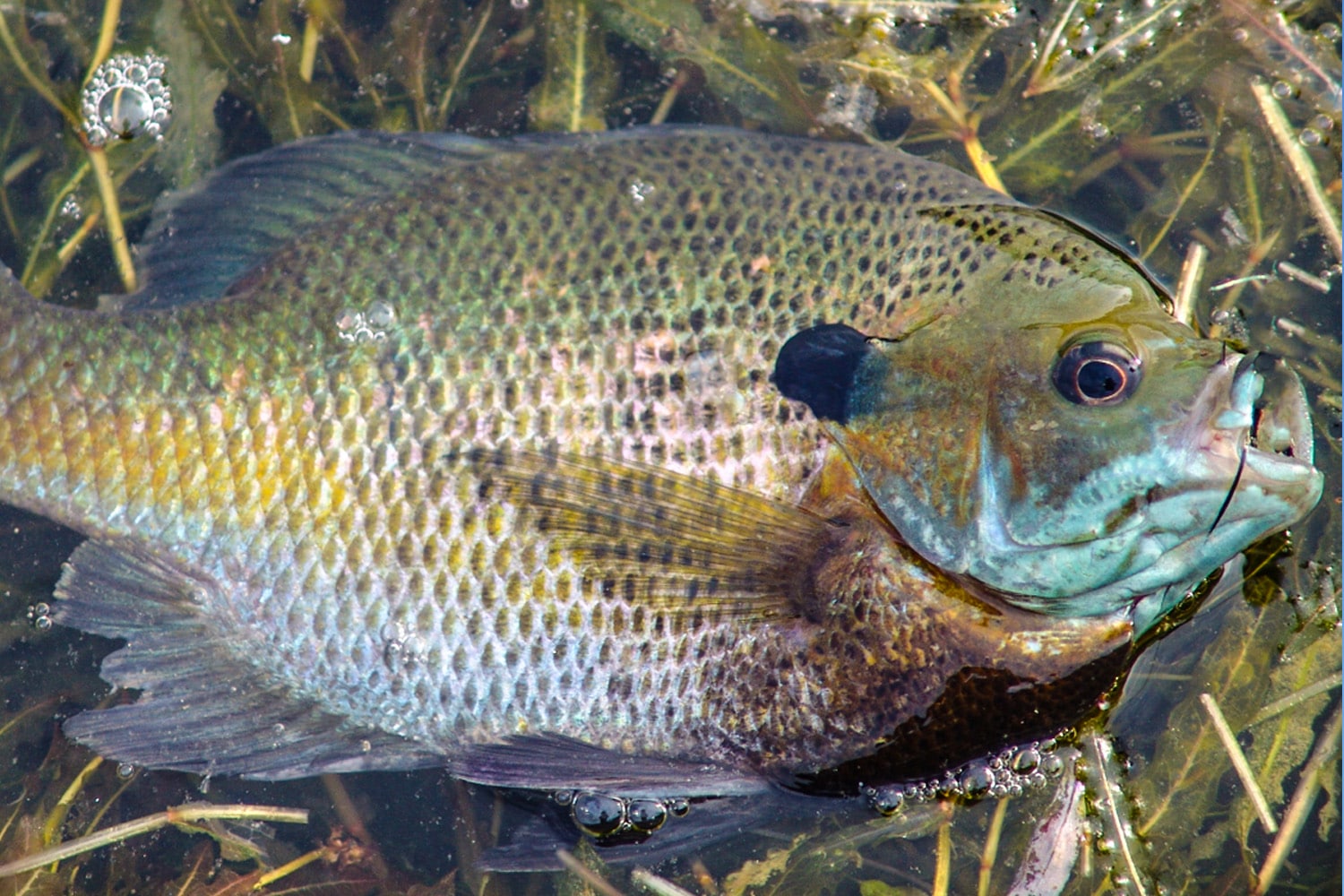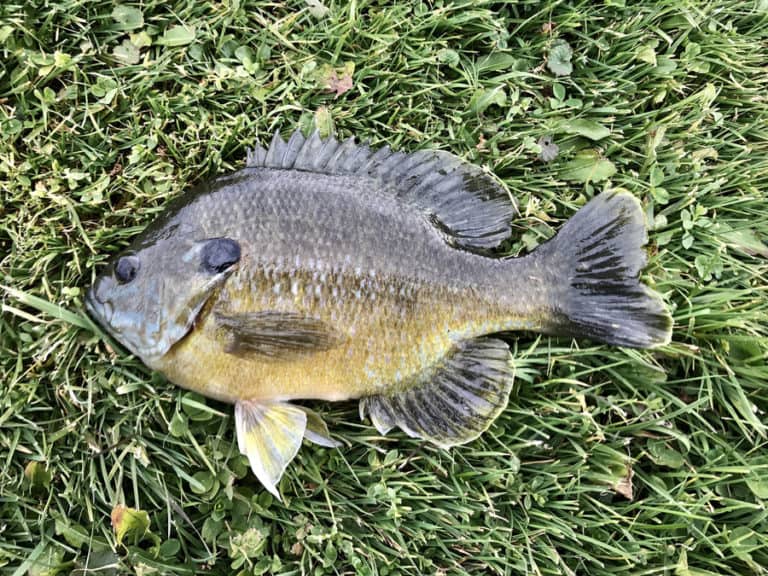Kodiak Bluegill: A Comprehensive Guide To The Majestic Fish Species
Exploring the world of freshwater fish, one species stands out for its vibrant colors and unique characteristics—the Kodiak Bluegill. Known for its striking blue hues and adaptability, this fish has captured the interest of anglers, researchers, and aquarists alike. Whether you're a seasoned fish enthusiast or a curious beginner, understanding the Kodiak Bluegill can open doors to fascinating insights about freshwater ecosystems.
The Kodiak Bluegill is not just any fish; it represents a blend of beauty and resilience. Found primarily in North America, this species thrives in various aquatic environments, showcasing its ability to adapt and survive. As we delve deeper into its world, you'll discover its importance in both ecological and recreational contexts.
This article aims to provide a comprehensive overview of the Kodiak Bluegill, covering everything from its biology and habitat to its role in fisheries and conservation efforts. By the end, you'll have a clearer understanding of why this fish deserves its place in the spotlight of freshwater ecosystems.
Read also:Iot Device Batch Job Example Understanding Implementation And Best Practices
Table of Contents
- Biography of Kodiak Bluegill
- Habitat and Distribution
- Physical Traits and Characteristics
- Diet and Feeding Habits
- Reproduction and Life Cycle
- Behavioral Patterns
- Conservation Status
- Fishing for Kodiak Bluegills
- Ecological Role
- Interesting Facts About Kodiak Bluegills
Biography of Kodiak Bluegill
Data and Biodata
| Scientific Name | Lepomis macrochirus |
|---|---|
| Common Name | Kodiak Bluegill |
| Family | Centrarchidae |
| Average Lifespan | 6-8 years |
| Habitat | Freshwater lakes, ponds, and slow-moving rivers |
The Kodiak Bluegill, scientifically known as Lepomis macrochirus, is a member of the sunfish family. It is native to North America and is widely distributed across the continent. This species is renowned for its vibrant colors, which range from deep blue to olive green, making it a favorite among anglers and aquarium enthusiasts.
Habitat and Distribution
The Kodiak Bluegill thrives in freshwater environments, including lakes, ponds, and slow-moving rivers. Its adaptability allows it to inhabit a wide range of aquatic ecosystems, from small ponds to large reservoirs. According to a study by the U.S. Fish and Wildlife Service, the species is particularly abundant in the Great Lakes region and the Mississippi River basin.
Factors Influencing Habitat Choice
- Water temperature: Kodiak Bluegills prefer waters with temperatures ranging from 68°F to 75°F.
- Vegetation: Dense aquatic vegetation provides shelter and breeding grounds for the species.
- Water quality: Clean, well-oxygenated water is essential for their survival.
Physical Traits and Characteristics
The Kodiak Bluegill is easily recognizable by its distinctive coloration and physical features. Adult fish typically grow up to 6-9 inches in length, with males displaying more vibrant colors during the breeding season. Their bodies are laterally compressed, allowing them to navigate through dense vegetation with ease.
Key Physical Features
- Coloration: Shades of blue, green, and yellow with vertical bars on the sides.
- Gill Cover: A dark spot or "ear" on the gill cover is a defining characteristic.
- Fin Shape: Rounded fins with a dorsal fin that extends along the back.
Diet and Feeding Habits
Kodiak Bluegills are omnivorous, feeding on a variety of organisms. Their diet primarily consists of insects, small crustaceans, and plant matter. During the early stages of life, juvenile bluegills rely on plankton as their main food source. As they mature, their diet expands to include larger prey items.
Factors Affecting Diet
- Seasonal changes: Food availability fluctuates with the seasons, influencing their feeding habits.
- Environmental conditions: Water temperature and clarity can impact the abundance of prey.
Reproduction and Life Cycle
The reproductive cycle of the Kodiak Bluegill is a fascinating process. Males construct nests in shallow waters, using their fins to clear debris and create a suitable environment for spawning. During the breeding season, which typically occurs from late spring to early summer, males exhibit aggressive behavior to protect their nests from intruders.
Key Stages of the Life Cycle
- Egg-laying: Females deposit eggs in the nests prepared by males.
- Incubation: Eggs hatch within a few days, depending on water temperature.
- Juvenile development: Young bluegills grow rapidly, reaching maturity in 2-3 years.
Behavioral Patterns
Kodiak Bluegills exhibit a range of behaviors that contribute to their survival and success in aquatic ecosystems. They are social creatures, often forming schools for protection and efficient foraging. During the breeding season, males become territorial, defending their nests against rivals.
Read also:Movierulz History Unveiling The Evolution And Impact Of Movie Streaming Platforms
Behavioral Adaptations
- Schooling: Reduces predation risk and enhances feeding opportunities.
- Diurnal activity: Most active during daylight hours, aligning with prey availability.
Conservation Status
The Kodiak Bluegill is currently classified as a species of least concern by the International Union for Conservation of Nature (IUCN). However, habitat degradation and overfishing pose potential threats to its population. Conservation efforts focus on maintaining healthy aquatic ecosystems and implementing sustainable fishing practices.
Conservation Strategies
- Habitat restoration: Enhancing water quality and preserving aquatic vegetation.
- Fishing regulations: Setting catch limits and enforcing size restrictions.
Fishing for Kodiak Bluegills
Anglers often target Kodiak Bluegills due to their abundance and fighting spirit. Fishing techniques vary depending on the season and location, but common methods include using live bait, such as worms and insects, and employing small lures to mimic their natural prey.
Tips for Successful Fishing
- Choose the right tackle: Lightweight rods and reels are ideal for catching bluegills.
- Timing is key: Early morning and late afternoon are the best times to fish.
Ecological Role
Kodiak Bluegills play a vital role in freshwater ecosystems. As both predators and prey, they contribute to the balance of aquatic food chains. Their presence helps control insect populations and provides a food source for larger fish and wildlife.
Impact on Ecosystems
- Predation control: Regulates populations of small aquatic organisms.
- Trophic interactions: Supports higher trophic levels through its role as prey.
Interesting Facts About Kodiak Bluegills
Here are some intriguing facts about Kodiak Bluegills that highlight their uniqueness:
- They can change color during the breeding season to attract mates.
- Kodiak Bluegills are capable of living up to 10 years in optimal conditions.
- They are known to hybridize with other sunfish species, producing offspring with unique traits.
Conclusion
In summary, the Kodiak Bluegill is a remarkable species that embodies the beauty and complexity of freshwater ecosystems. From its vibrant colors and adaptability to its ecological significance, this fish deserves recognition and appreciation. By understanding its biology, habitat, and conservation needs, we can ensure its survival for future generations.
We invite you to share your thoughts and experiences with Kodiak Bluegills in the comments section below. Additionally, feel free to explore other articles on our website for more insights into the world of freshwater fish. Together, we can promote awareness and conservation of these incredible creatures.
Article Recommendations


